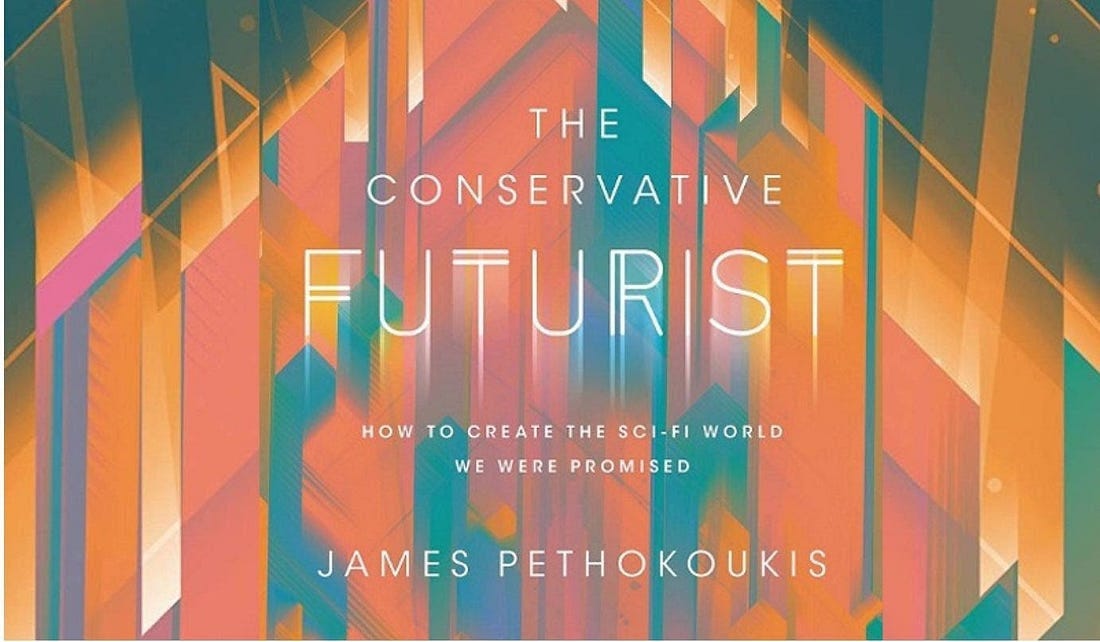🏫⤴ Why every student should study the history of progress (Flashback Friday)
Schools should teach how the modern world was made as foundational knowledge, not enrichment
My fellow pro-growth/progress/abundance Up Wingers,
The final Boeing 747 rolled off the production line in early 2023, capping a 54-year run for the aircraft that revolutionized global travel. Nearly 1,600 were built, its widebody, twin-aisle design slashing per-passenger costs and opening long-haul flight to the masses. In an era when Concorde symbolized the flying future, the subsonic 747 quietly became the real revolution.
It’s an Up Wing story that reveals how innovation has and continues to reshape the world. American students should know and understand this story and many others like it. From fertilizers to flight, the exponential rise in human prosperity over the past two centuries is the defining narrative of modern civilization. Yet too few people grasp the technologies or breakthroughs behind it.
Take the 747 itself. The commercial airliner didn’t just reshape aviation, it left a cultural contrail. One of its most iconic appearances came in Koyaanisqatsi, the 1982 avant-garde film critiquing industrial society. In a captivating two-minute sequence, a United Airlines 747 slowly taxis across a heat-distorted runway, meant to symbolize imbalance and excess. But that image — like much of the film — invites dual interpretations. The jet’s scale and elegance can also inspire awe. Film critic Roger Ebert offered a Shakespearean-flavored critique: “All of the images in this movie are beautiful, even the images of man despoiling the environment. … What a piece of work is a man!”
Which raises the question: How well do students understand the underlying forces that built the world around them? In economist Tim Harford’s 50 Things That Made the Modern Economy podcast, the 747 doesn’t crack the top tier — fair enough, given competition from the internal combustion engine and the Haber-Bosch process. But many of Harford’s picks, such as synthetic fertilizer or the shipping container, remain unfamiliar to most high schoolers. That’s a problem.
So how about a new curriculum? One class in particular: A History of Progress. Such a course would teach economic and technological history as foundational knowledge, not enrichment. Students could trace the arc from the spinning jenny and steam engine to semiconductors and gene editing. They’d study Norman Borlaug and the Green Revolution alongside Thomas Edison, Jack Kilby, and Jennifer Doudna. A unit on Silicon Valley might unpack Moore’s Law, Apollo-era procurement, and the rise of the Information and Communications Technology Revolution.
The goal isn’t to brainwash kids with techno-utopianism. It’s civic literacy. As Jason Crawford of Roots of Progress points out, understanding industrial civilization means knowing how most people stay alive: vaccines, sanitation, and antibiotics. Before those, infant mortality reached 20 percent. Most people lived on the edge of starvation. Today’s policy debates — from energy to AI — make little sense without that historical baseline.
If a filmmaker were to update Koyaanisqatsi today, they might point the lens not at a Boeing jet but at a SpaceX rocket — symbols of both unease (to some, apparently) and extraordinary potential (to me, unreservedly). Either way, the lesson holds. Technology is not just tools and gadgets. It’s the architecture of modern life. We ought to teach it that way.
This piece was adapted from my Feb. 1, 2023 essay, “Let's add AP Progress to the high school curriculum.”
On sale everywhere: The Conservative Futurist: How To Create the Sci-Fi World We Were Promised by James Pethokoukis
Micro Reads
▶ Economics
Don’t Make a Dumb Trade War Any Dumber - Bberg Opinion
AI Bubble Today Is Bigger Than the IT Bubble in the 1990s - Apollo Academy
▶ Business
Elon Musk Is Cashing In on the AI Romance Boom - Bberg Opinion
▶ Policy/Politics
China’s AI Policy at the Crossroads: Balancing Development and Control in the DeepSeek Era - Carnegie Endowment
▶ AI/Digital
Don’t Surrender China’s AI Market - WSJ Opinion
The Seductions of A.I. for the Writer’s Mind - NYT Opinion
▶ Biotech/Health
The world is winning the war on cancer - Economist
▶ Clean Energy/Climate
Why Is Thea Energy, the Fusion Company, in New Jersey? - Heatmap News
UK Heatwave: Brits Keep a Sweaty Upper Lip on Air Conditioning - Bberg Opinion
Trump administration taking new steps to block wind and solar projects, undisclosed memo says - Politico
▶ Robotics/Drones/AVs
The Battle of the Robotaxis Is Beginning - Bberg Opinion
Uber agrees multibillion-dollar deal with Lucid for electric robotaxi fleet - FT
▶ Space/Transportation
▶ Up Wing/Down Wing
The grammar of a god-ocean - Aeon
Where Are the Moonshots? - Issues
▶ Substacks/Newsletters
We probably can't ban prescription drug ads - Slow Boring
The Great Tariff ‘Inflation’ Confusion - The Dispatch
Sub-Saharan Africa Can't Afford to Eat on a Carbon Diet - The Ecomodernist
Testimony at House Hearing on Immigration Parole and Deportation - Laissez-Faire, Laissez-Passer
How China Became the World’s Biggest Shipbuilder - Construction Physics
▶ Social Media
On solar + batteries - @janrosenow
Re: Mike Rowe on blue color jobs - @GreenPlusAnE
California manufacturing - @jansramek
Cloudflare to block AI data scrapers - @neil_chilson
Immigrants and child outcomes in Europe - @paulnovosad






The most important discoveries are those that change how we see the world.
For example "Clan of the Cave Bear..." The heroine Ayla uses bow and arrow to stop a Neanderthal, before he can get close enough to use a thrusting spear. That shocks his tribe.
At that level, we might include fire, and wheel. Perhaps steam engine.
But then the gas engine is a refinement, not a paradigm shift.